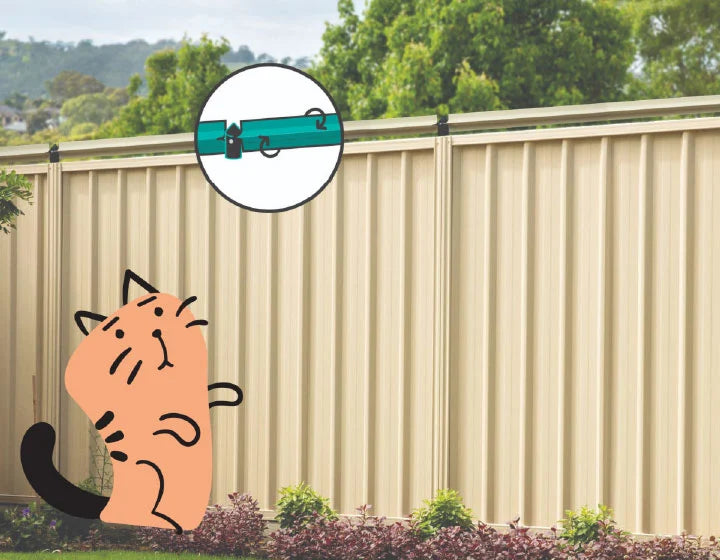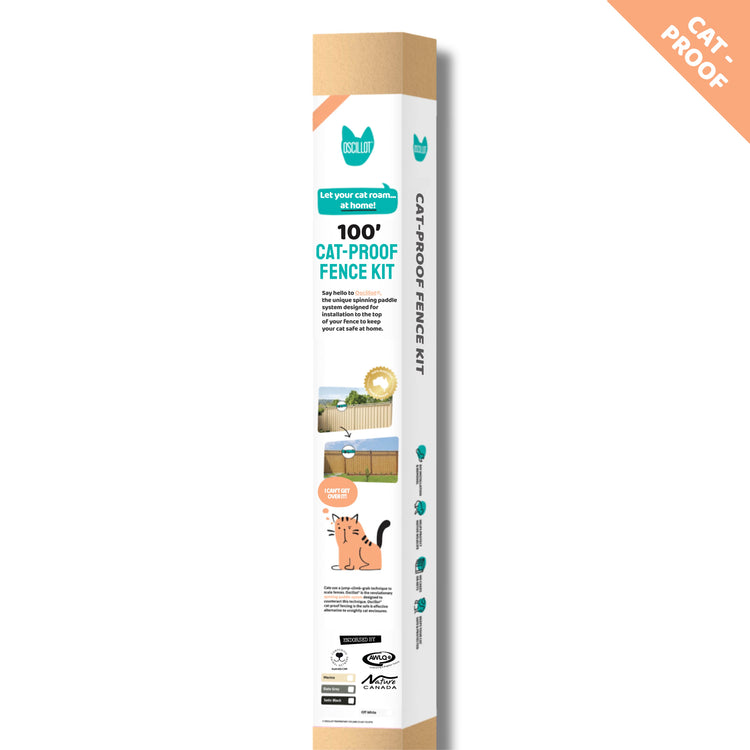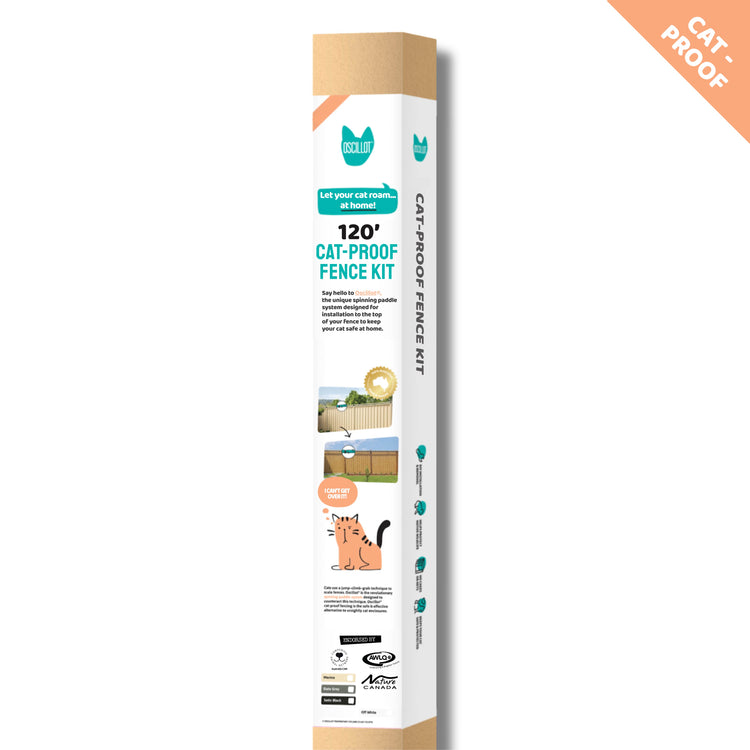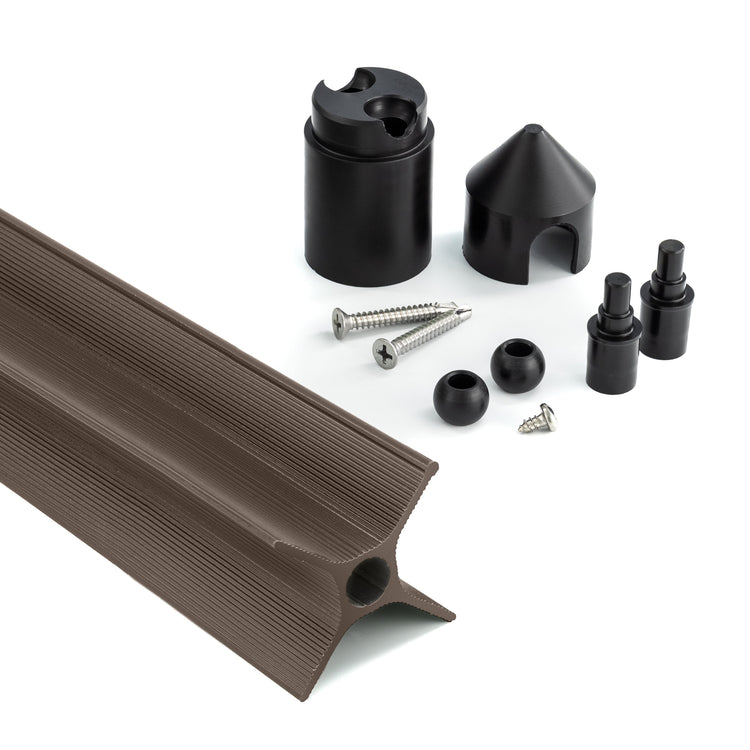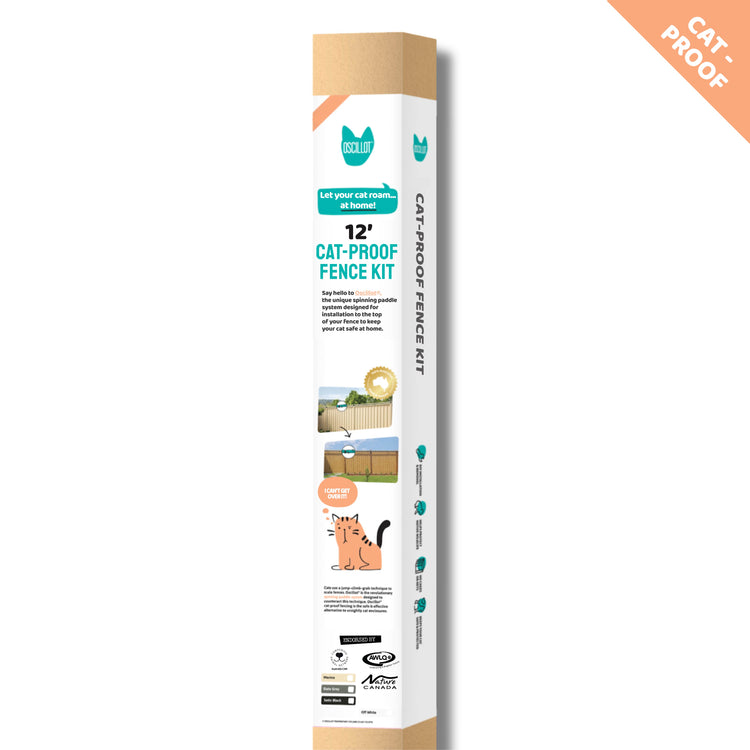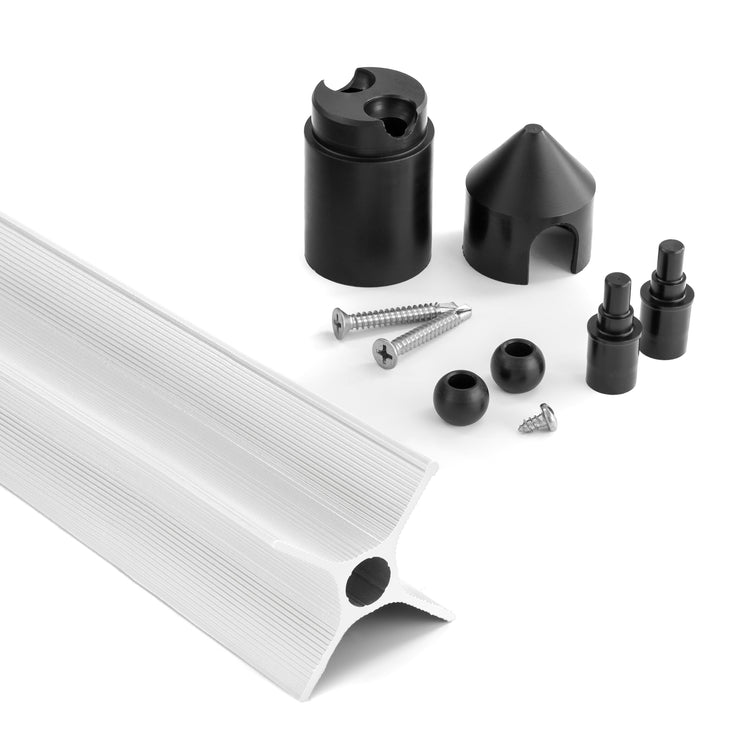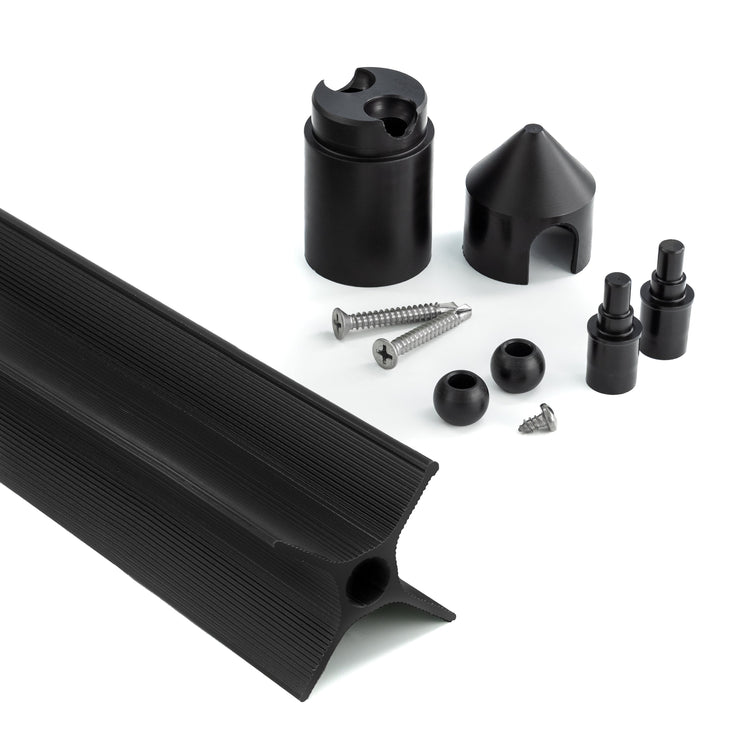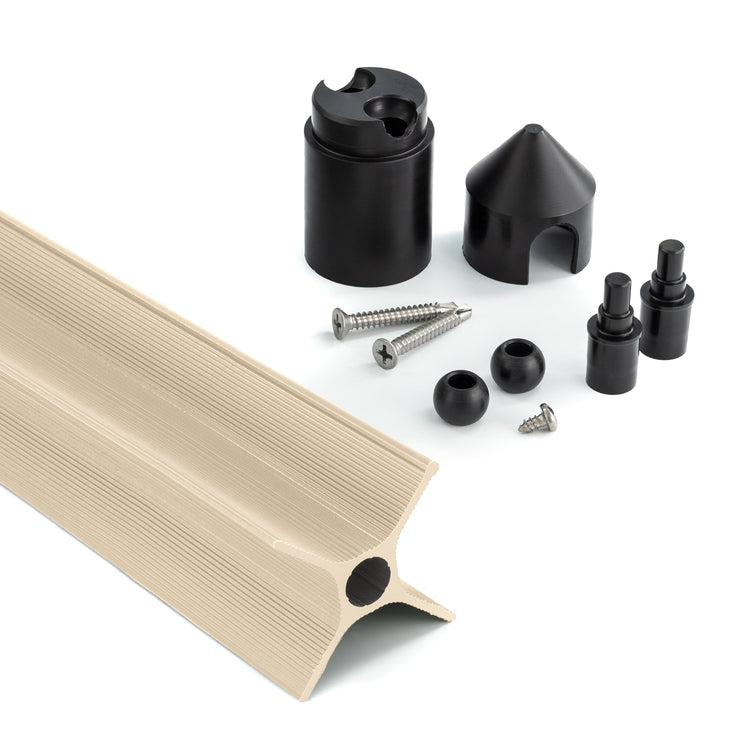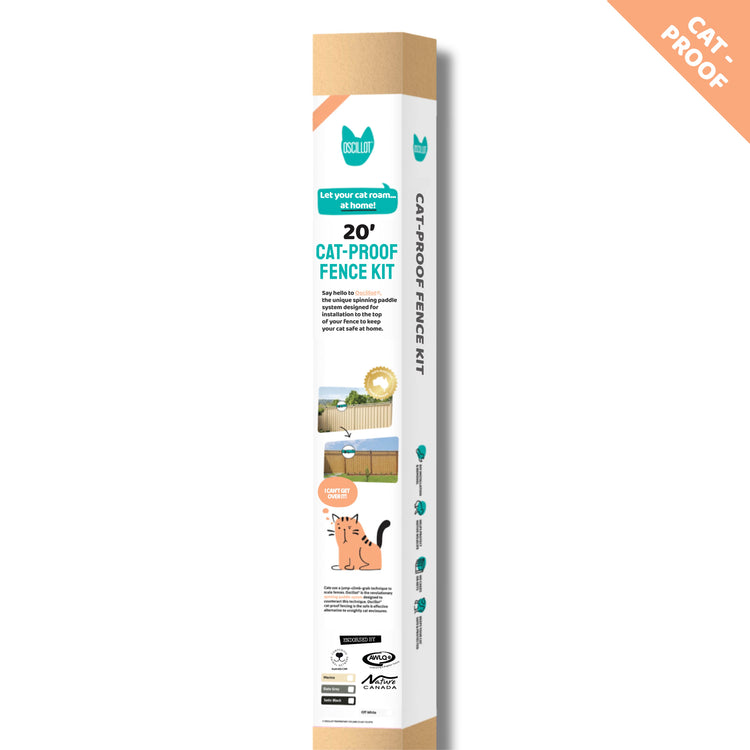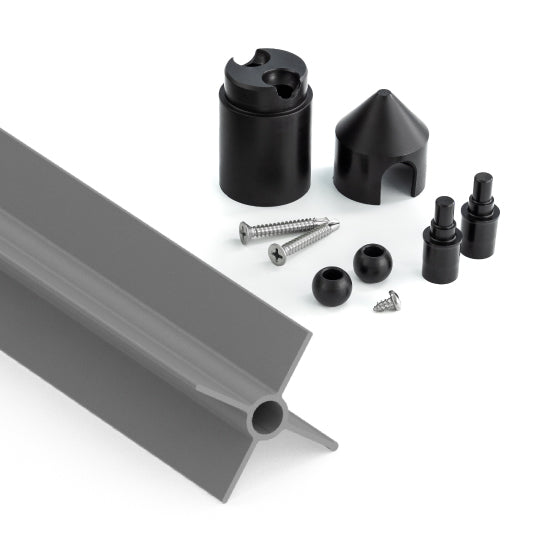Protecting Your Oscillot System in Coastal Environments

If you have an Oscillot cat containment system and live near the sea, you need to know how to keep it working well. The salty air and tough weather can be hard on outdoor equipment. Let's look at how to take care of your Oscillot fence so it keeps your cats safe for a long time, while also making sure it stays strong and looks good in tricky coastal conditions.
Key Takeaways
| Aspect | Recommendation |
|---|---|
| Cleaning Frequency | Weekly visual checks, monthly thorough cleaning |
| Rust Prevention | Apply protective spray every few months |
| Alignment | Regular checks, especially after storms |
| Vegetation Management | Trim overhanging branches and monitor climbing plants |
| Seasonal Care | Adjust maintenance routine based on weather changes |
Understanding Maritime Challenges for Cat Fencing
Living by the sea is nice, but it can be tough on outdoor stuff. Salt in the air can make metal rust faster, which could weaken your cat containment system. The air is also very damp, which can cause problems like mold and wear on materials. Strong winds and storms can also knock things around, possibly moving or damaging parts of your Oscillot fence. These are the main things in the environment that can affect how long your Oscillot fence lasts and how well it works near the coast.
To keep your cats safe, you need to make sure your fence stays strong. This means checking it often and fixing any problems quickly. It's like taking care of a bike - if you look after it, it'll work better and last longer. Taking care of your fence regularly not only keeps your cats safe but also protects the money you spent on the Oscillot system, possibly saving you money on fixes or replacements later on.
Key Parts of Your Oscillot System
Your Oscillot fence has a few important parts that work together to keep your cats in. The main parts are the paddles and the posts that hold them up. The paddles are the important moving parts that spin around to stop your cat from climbing over. They're designed in a clever way that stops cats from getting a grip. The posts make sure everything stays in place, giving the support needed for the system to work properly. Understanding these parts is important for taking good care of the fence and fixing any problems.
The fence needs to be at least 1.83 metres tall for the Oscillot system to work well, making sure cats can't just jump over. Each paddle is 1.2 metres long, but you can cut them to fit your fence just right. This means you can set up your Oscillot fence yourself, even if your garden isn't a perfect square. The Oscillot system can work for many different types and sizes of properties, so cat owners can make a safe outdoor space no matter what their garden looks like.
Keeping Your Oscillot Fence Clean and Working Well
To keep your Oscillot fence in good shape, especially near the coast, you need to check and clean it regularly. Here's what you should do:
- Every week, walk around your fence and look for any obvious problems like paddles that aren't straight, loose parts, or signs of rust.
- Once a month, give everything a good clean with fresh water to wash off salt. This helps you spot any issues you might have missed and stops salt from building up and causing rust.
- Use a soft brush or cloth to wipe off any salt or dirt on the paddles and posts. Be gentle so you don't scratch them, which could make them rust more easily.
- Pay special attention to joints and moving parts, making sure they're clean and can move freely.
Cleaning your fence isn't just about making it look nice. It helps you find and fix small problems before they become big ones. This careful approach makes sure your cat fence solution stays effective for longer, keeping it strong even in tough coastal conditions.
Protecting Against Salty Air
The salty air near the sea can make metal rust faster, which can be bad for your Oscillot fence. To protect your fence and make it last longer, try these things:
- Use a special spray made for protecting things near the sea. These sprays often have stuff in them that stops rust. You can find these at most hardware stores or shops that sell boat stuff.
- Put the spray on every few months, or more often if you live really close to the sea. It's especially important to do this before winter when the weather gets worse.
- If you see any rust starting, clean it off right away with a wire brush or sandpaper. Then, put on something to stop the rust before using the protective spray again.
- Think about putting a special metal piece called a sacrificial anode on metal parts of your fence. This is a trick used on boats that can help metal parts last longer by attracting the stuff that causes rust away from the main fence.
Doing these things will help your fence last much longer near the sea. It's like putting sunscreen on your skin - it protects against damage from the environment. For more tips on keeping your cat fence toppers in good shape in tough places, check out our detailed blog posts.
Making Sure Everything Stays in Place
Strong winds by the sea can sometimes make things move around, which could stop your cat fence from working well. To keep your Oscillot fence working properly in these tough conditions, follow these tips:
- Check that the paddles can still spin freely at least once a week. If they're stuck, they won't stop your cat from climbing over. Use a special water-resistant oil to make sure they move smoothly.
- Make sure all the parts are still tightly attached to your fence. Tighten any loose screws or bolts, using ones that won't rust if you need to replace any.
- After a big storm, do an extra careful check to make sure nothing has been damaged or knocked out of place. Pay special attention to how the paddles line up and if the posts are still stable.
- Think about putting up windbreaks or extra support in areas that get a lot of wind. This can help protect your Oscillot system during bad weather.
Keeping everything lined up properly is key to making sure your Oscillot system stays effective near the sea. It's like making sure the wheels on your bike are straight - it just works better that way. Checking and adjusting things regularly will make sure your cats stay safely inside, even when the weather near the coast gets tough.
Dealing with Plants and Trees in Coastal Gardens
Gardens near the sea often have lots of plants that grow quickly. To keep your Oscillot fence working well with these plants around, try these things:
- Cut any branches that hang over your fence regularly. These branches could give your cat a way to climb over.
- Watch out for climbing plants. They might look nice, but they can also help your cat escape. Try to keep climbing plants away from the fence or choose plants that don't climb for areas near your Oscillot system.
- Check the ground near your fence posts often, especially after heavy rain or high tides. Make sure soil hasn't washed away, leaving the posts loose. In areas where soil often washes away, think about adding extra support or using ways to stop the soil from washing away to protect the bottom of your fence.
- Be careful with plants that grow well in salty air. While these plants are great for your garden, make sure they don't get in the way of the Oscillot system by keeping them well-trimmed and away from moving parts.
Taking care of the plants around your fence is just as important as looking after the fence itself near the sea. It's all part of creating a safe outdoor space for your cat while keeping your coastal garden looking nice. Regular garden care that's right for your coastal environment will make sure your Oscillot system keeps working well and your cats stay safely inside.
Looking After Your Fence in Different Coastal Seasons
The weather changes a lot through the year near the coast, which can make it tricky to take care of your Oscillot fence. Here's how to look after your fence in different seasons by the sea:
- In autumn, clear away fallen leaves more often as they might get stuck in the fence because of coastal winds. Use this time to put on extra protection before winter comes.
- Before winter storms, do an extra careful check to make sure everything is secure. Think about adding temporary windbreaks or extra support to parts of your fence that might get hit hard by winter sea storms.
- In spring, do a big check to look for any damage the winter weather might have caused. Pay special attention to signs of rust from salt and fix any problems quickly to stop them from getting worse.
- In summer, watch out for more salt building up from sea spray and clean it off more often. The mix of salt and strong summer sun can make things wear out faster, so think about using special coatings that protect against sun damage on plastic parts.
- During the months when seasons are changing, be ready for sudden weather changes that often happen near the coast. Check your fence more often during these times to make sure it keeps working well even when the weather changes quickly.
By changing how you care for your fence with the coastal seasons, you can keep it working well all year round, making sure your cats are always protected. This way of looking after your fence helps deal with the special challenges of coastal weather. For more detailed tips on maintaining your cat fence in different kinds of weather, check out our detailed blog posts.
Fixing Common Problems in Coastal Installations
Even if you take good care of your Oscillot fence, you might sometimes have problems with it near the coast because of the tough weather conditions. Here are some common issues you might see near the coast and how to fix them:
- If the paddles don't spin well because of salt buildup, clean them carefully with fresh water and mild soap. After they're dry, use a special dry lubricant made for marine use that won't attract sand or salt. This kind of lubricant makes a protective layer that stops salt from building up again.
- If parts of the fence have moved because of strong coastal winds, carefully put them back in place and tighten all the screws and bolts. Think about using special washers or glue that stops screws from coming loose in future storms. For areas that keep having problems, you might need to add extra support or things that block the wind.
- If sand has built up around the bottom of the fence, not only clear it away but also think about putting in small barriers or changing the landscape to keep sand from building up near your fence. This can help stop the paddles from getting stuck and mean you don't have to clean as often.
- For metal parts that are starting to rust badly, sand down the rusty areas, put on a special rust-stopping product, and finish with a paint or coating that's made to resist rust near the sea. Doing all these steps can really help metal parts last longer when they're exposed to salty air.
Fixing these coastal problems quickly helps keep your fence working well in tough seaside conditions. It's like dealing with a small leak in a boat - fixing issues quickly stops bigger problems from happening. This quick-action approach is really important near the coast where the weather can make things wear out faster. For more detailed advice on cat-proofing your fence in different places, including near the coast, visit our detailed online resources.
When to Replace Parts in Coastal Installations
Near the coast, the tough conditions can make parts of your Oscillot fence wear out faster. Knowing when to replace parts is important to keep the system working well. Here's what to look out for with fences near the coast:
- If the paddles are very scratched, have little holes, or don't spin well even after a good clean and oiling, they might need to be replaced. Near the coast, look for signs of damage from salt or sun, which can make the paddles weak and not work properly.
- Check the posts for any signs of rust, wear, or weakness from being in salty air all the time. If they're wobbly or look really worn, it's important to replace them to keep your whole fence system stable.
- Look at any plastic parts for signs of cracking, fading, or becoming brittle from being in the sun and salt spray for a long time. The strong sun near the coast can make plastic parts wear out faster.
- Check all the screws, bolts, and fasteners regularly. Near the coast, these can rust quickly, even if they're made of stainless steel. Replace any that show signs of rust or have become hard to tighten properly.
- Keep an eye on the protective coatings on metal parts. If you notice areas where the coating has worn away, showing the metal underneath, it's time to put on more protection or think about replacing the part if rust has already started.
Near the coast, it's especially important to replace parts before they completely wear out to make sure your cats are always protected. This careful approach can stop sudden failures that might let your cats escape. You can find good quality replacement parts made especially for use near the coast on our website. For more information about our newest ideas, including materials and designs made to last in tough environments, check out our blog post about the new Oscillot cat-proof fence system, which is made to last longer in challenging coastal conditions.
Wrapping Up: Keeping Your Oscillot Fence in Top Shape in Coastal Areas
Taking care of your Oscillot fence near the coast takes some work and attention to detail, but it's worth it to keep your cats safe while enjoying life by the sea. Let's go over the main points for taking good care of your fence near the coast:
- Do quick checks every week and thorough cleanings every month to fight salt buildup and catch problems early
- Use special protective coatings regularly to shield against rust and salt damage
- Make sure all parts stay properly lined up, especially after storms or strong winds
- Manage plants around the fence to prevent them from interfering with the system
- Change how you take care of the fence with each season to deal with different coastal weather challenges
- Fix small problems quickly to prevent bigger issues from developing
- Be quick to replace parts that show signs of wear or rust
- Think about using parts specially made for coastal areas when you need to replace things
By carefully following these guidelines, you can make sure your Oscillot fence stays strong and works well, giving your cats a safe outdoor space even with the challenges of living near the coast. This thorough approach to taking care of your fence not only protects the money you've spent but also gives you peace of mind, knowing your furry friends are safe to enjoy the outdoors at your coastal home.
For more detailed information on how to set up and take care of your Oscillot system in different places, including special advice for coastal areas, visit our website. Our team wants to help cat owners create safe, fun outdoor spaces for their pets, no matter where they live or what environmental challenges they face. Remember, a well-maintained Oscillot system is key to making sure your cats can safely enjoy being outside, even in the toughest coastal settings!



